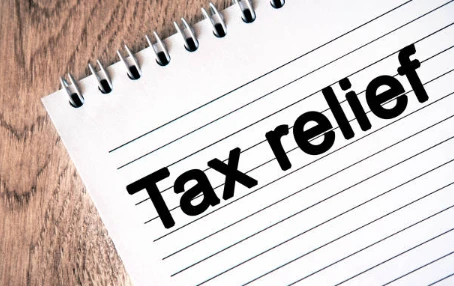Dealing with tax issues is a reality for many people. Learn how tax relief options may ease your burden without added risks.
Understanding Tax Relief
Tax relief refers to programs or strategies designed to reduce or manage tax obligations owed to the IRS. Tax debt relief helps taxpayers who struggle to pay their taxes in full. Options like tax forgiveness or tax settlement can lower the total amount owed. These solutions are useful for individuals facing financial hardship due to unexpected life events or economic difficulties.
What is Tax Debt Relief?
Tax debt relief involves methods to address unpaid taxes, making payments more manageable. The IRS offers tax relief programs to help taxpayers settle debts through structured plans. For example, a tax settlement allows negotiation to reduce the debt. These programs aim to ease financial stress while ensuring compliance with tax laws, helping people regain control of their finances.
IRS Tax Relief Programs
The IRS provides several tax relief options for eligible taxpayers. One common IRS tax relief program is the Offer in Compromise, which may reduce the total debt through a tax settlement. Another option is an installment agreement, allowing payments over time. Tax forgiveness programs might waive penalties for those who qualify, helping reduce the overall burden.
How Tax Forgiveness Works
Tax forgiveness can reduce penalties or interest for taxpayers facing financial challenges. IRS tax relief programs sometimes include penalty abatement for issues like late payments. Tax forgiveness doesn’t eliminate the entire debt but can make it more affordable. This option is often available to those who show they cannot pay due to hardship.
Exploring Tax Settlement Options
A tax settlement involves negotiating with the IRS to pay less than the full amount owed. This form of tax debt relief requires proving financial hardship or inability to pay. The IRS reviews income, expenses, and assets before approving a tax settlement. Working with a tax professional can help navigate this complex process successfully.
Benefits of IRS Tax Relief
IRS tax relief programs provide practical benefits for struggling taxpayers. They can prevent severe consequences like wage garnishment or bank levies. Tax debt relief options, such as installment agreements, allow payments to fit within a budget. These programs help taxpayers avoid further financial strain while staying compliant with IRS regulations.
Eligibility for Tax Relief
Not everyone qualifies for tax relief, but many can benefit. The IRS evaluates financial situations to determine eligibility for tax forgiveness or a tax settlement. Factors like income, expenses, and debts are considered. Taxpayers must file all required tax returns to access IRS tax relief, as unfiled returns can disqualify them from these programs.
Steps to Apply for Tax Relief
Applying for tax debt relief starts with understanding your tax situation. Gather financial documents, like income statements and expense records, to support your case. For a tax settlement or tax forgiveness, submit an application to the IRS with detailed information. Consulting a tax professional can simplify the process and improve the chances of approval.
Role of Tax Professionals
Working with a tax professional can make tax relief easier to navigate. They understand IRS tax relief programs and can guide taxpayers through applications for tax forgiveness or settlements. Professionals ensure paperwork is accurate and deadlines are met. Their expertise helps avoid mistakes that could delay or deny relief.
Risks to Avoid in Tax Relief
While tax relief is helpful, caution is needed when choosing assistance. Some companies may charge high fees for tax debt relief services without guaranteed results. Always verify the credibility of any service provider before proceeding with a tax settlement. Researching IRS guidelines directly ensures taxpayers make informed decisions.
Long-Term Financial Planning
Tax relief is a short-term solution, but long-term planning prevents future tax issues. After securing IRS tax relief, taxpayers can adjust their withholding or estimated payments to avoid new debts. Budgeting and tracking expenses help maintain financial stability. Tax forgiveness or settlements provide a fresh start, but ongoing discipline is key.
Conclusion: A Path to Financial Relief
Tax relief offers practical ways to manage tax obligations safely. Programs like tax debt relief, tax forgiveness, and tax settlement help reduce IRS payments. IRS tax relief options, such as installment agreements or Offers in Compromise, provide flexibility for those in financial hardship. By exploring these solutions and working with professionals, taxpayers can address debts and plan for a more secure financial future.





